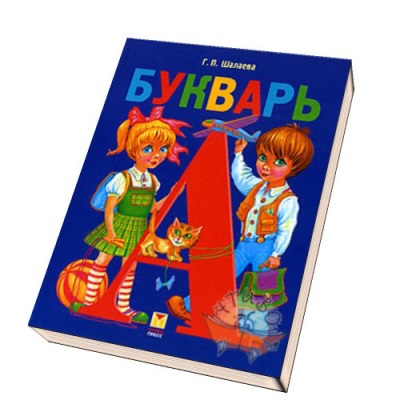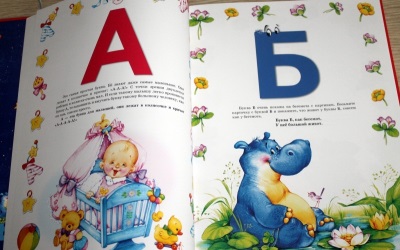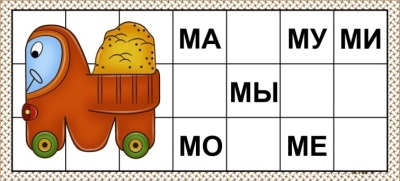How to quickly teach a child to read?
When there is very little time left before school, and the child still does not know how to read, the parents start to panic, because the kid will go to the first class not prepared. There is a problem, how quickly to teach him to read. This can be done at home, without the help of teachers. In the article we will answer the main questions that may arise from parents trying to quickly teach a child to read.
How to understand that the child is ready to learn?
Interest in reading arises in children about 5 years. But we all know that every child is different in its development. Some are ready to learn as early as 4 years, and some will have to postpone this process to 6-7 years. It is very important for parents not to miss this moment, because it is during this period that it will be much easier to teach reading.
Contribute to the awakening of interest in reading a child can be a personal example. There should be books and magazines at home, the child should see that the process of reading is enjoyable for parents. Answering the child's questions, you can tell him about which book has this answer.
You can understand whether a child is ready to learn to read, if you analyze a number of factors:
- Does a child know enough to speak? he should have a rich vocabulary, be able to build phrases, harmonize words, clearly express his thoughts, be able to talk about objects and phenomena surrounding him;
- Is phonemic hearing well developed? Pay attention to whether the child can distinguish the sounds of speech, name the first or last sound in a word, whether he can reproduce the sounds he heard;
- Are there any problems with hearing and pronunciation. The child must have all the sounds set, the correct tempo of speech, the rhythm must be observed;
- The kid should be free to navigate in space, know the concepts of right-left, top-bottom.
If all of these factors are fully met, your child is ready to learn to read.
The best way - learning to read in a game form
All educational and developmental activities with preschoolers should be played. At this age, the child is simply not able to perceive new information in a different way. The game is the most active form by which the preschooler learns the world. It is a natural condition for a child of this age. All classes should be unobtrusive, arranged according to the principle “as if, by the way”, then the child will learn the information more fully.
For learning to read, you can use a lot of gaming tools and games. Using playing activity in learning, we create a positive emotional background that will help the child learn the knowledge gained. With the help of the game we will be able to instill a love of reading. In the game there is no obligation, the child develops as he can.
If, for example, the baby cannot yet move from syllable reading to read the words together, it means he is not ready yet. Do not be overstated. If suddenly a child has a persistent reluctance to learn to read, then an adult somewhere made a mistake.In this case, you should stop learning, pause and try again, offering interesting games to your child.
Video review of the most popular methods of teaching reading, see in the video:
Review of effective games and techniques
Teach your child not letters, but sounds. It will be difficult for the kid to understand that the letter “um” (or even “mee”) is read as “m”, and he will read the word MAMA, EMAEMA. At first, only sounds, and only when the child understands how to read, proceed to the study of the correct name of the letters.
Effective techniques
Zaitsev's cubes
Modern parents have heard a lot about Zaitsev's dice. This is one of the most popular methods nowadays, with the help of which you can teach your child to read quite quickly. This way of learning is suitable for active kids who find it difficult to sit in one place. Warehouses written in cubes are taken as one unit. This distinguishes this technique from the usual ones, where one unit is one letter. A talking child at almost any age will be able to pronounce these warehouses.
There are different types of warehouses on Zaitsev's cubes:
- warehouses with only one letter
- a warehouse combining two letters: consonant and vowel, consonant and soft sign, consonant and solid sign.
Cubes have a different color and, depending on it, are called differently. Cubes with vowels are called gold, their color is golden. Warehouses that sound loud are called iron, their color is gray. Wooden, or brown cubes - warehouses with a dull sound. Punctuation marks represent white and green cubes.
Cubes have their filling and, depending on it, their sound and different weight. They can be filled:
- wood chopsticks;
- bells;
- sand;
- stones;
- small metal objects;
- caps and stoppers.
Also, the cubes vary in size. If the cube is of normal size, it means that the warehouse is soft on it. If the cube is doubled, then the warehouse on it will be solid.
In addition to cubes, tables are used on which all the warehouses are written. These tables are always in sight in children.
Watch the video review of a customer of a set of Zaitsev Cubes:
Already from 2 years you can use the cubes to acquaint the child with reading. The older the child, the less classes he will need to learn to read. So, children under 3 years old will be able to master this skill in about six months, while a six-year-old child will need only 5-6 lessons to master reading skills.
Being engaged, children do not spend time in one place. They are always on the move. All classes are conducted only in the form of a game.
The most popular dice games are:
- Cheerful steam locomotive. Children put a locomotive into cubes with vowels. The engine begins to move when all the warehouses on the cubes will be sung.
- Gingerbread Man. The child throws a cube-bun in any place in the room. He needs to catch up with the cube and read the warehouse, which was on top.
- Find a pair. To any cube warehouse you like, you need to find the same in the table.
- Voices of animals. We are looking for warehouses on cubes that correspond to the sounds made by animals (me, meow, ba, mu).
Reviews of parents about this technique are not unambiguous. Someone says that with the help of this technique the baby loved reading. They helped develop a child’s logic, thinking, and critical thinking skills, and contributed to his full development. It turned out to be absolutely not difficult for such parents to deal with the child; they noted that the children easily switched to independent reading.
A number of parents did not see results in learning cubes. The children did not understand the essence of such reading, it was difficult for them to go on reading by syllables. For these guys, the individual form of education was not suitable, difficulties arose. With the collective form of learning success was greater.
Watch another interesting video about Zaitsev's cubes:
Speech therapy technique N. Zhukova
Another, not less popular, method of fast reading reading is the technique developed by N. Zhukova. It is based on speech therapy approach. With it, you can prevent the appearance of speech defects. Learning takes place with the help of the Primer, whose hero is the “Merry Boy”. The boy helps the child to learn the correct reading, this process happens very quickly. Primer begins with learning to read syllables. Gradually, words appear and at the end are offered for reading texts.
In Bukvare a minimum of unnecessary information, the child has nothing to distract from the process, there are some entertaining games and pictures in it. The technique is suitable only for highly motivated five-year-olds who want to go to school faster.
Video review ABC N. Zhukova, see here:
Games to help your child learn to read quickly
Games for learning letters
- Create together with the baby bright and memorable images of letters, with which he will then be able to play. For such purposes, you can use ready-made cards, which show colorful letters.
You can work with the primer Helena Bakhtina. She offers colored letters that can be cut, entertaining pictures and interesting stories about each letter. You can use colorings, where letters resemble various objects.
- To memorize letters, you can use short poems, telling about the letter.
- Constructing letters from matches, counting sticks, plasticine, wire.
- Create with baby table remind about each letter.
- Create an album in which the letters will live. Each page is a housing for a single letter. Housing can be decorated with pictures, starting with this letter, coloring, write poems about this letter.
- Name the letters that hid. The child is offered a picture in which he must find various letters.
- Together with the child, you can create a home for letters. In the house for each letter should be a window-pocket. After studying the letter, we populate the cardboard letter home. Learned letters can offer the treat that begins with it (A - apricot, pineapple). Fairy-tale heroes can visit the letter with which their name begins (L - Leopold, M - Masha). With the help of such a house for letters, the child will learn to recognize the letters he has learned, to identify the first letter in the word.
- "Catch the sound" We throw the ball to the child, calling different words. If the word has a studied letter, then we catch the ball. If there is no letter, the ball must be beaten.
- You can use board games to learn letters. Well help in this lotto and dominoes with letters. The ideal option would be a lotto, which does not contain pictures, but only letters. So the stage of memorizing letters will be much faster. You can do this lotto yourself. It will require 6-8 cards with written letters and small pictures with letters that the child will call to search on the cards.
- Riddles in which the studied sound often repeats.
Elephant in Africa was walking,
Long trunk wagged,
And then again! - and disappeared:
Turned into a letter ... (C)
- «Fishing". In the basin, the pictures are attached to which the magnets are attached. The task of the child: catch all the words in the name of which there is a studied letter.
An example of another educational game, see the video:
Games aimed at the ability to add syllables
After you and your child have studied all the letters, the next stage begins - we add syllables.
- By the same principle as the lotto is made for letters, you can make syllabic lotto.
- You can use the game-hodilki. Such games can be made independently, using ready-made games-hodilki as a basis.In the empty cells, on which it is necessary to move the chip, it is necessary to enter various syllables. During the game, the child throws the dice as usual. The difference is that he must read the syllables that have come his way. So you can get audio tracks, even consisting of 6 syllables. By the same principle, you can make a race track. The child must move the machine, reading the syllables encountered in its path. Whoever reads all syllables faster will reach the destination faster and win the race.
- Games "Store" and "Mail." Write different syllables on the coins to play the store. The buyer must give a coin on which the syllable is written. The name of the goods should begin with this syllable (a coin with a syllable ba - we buy a banana, a coin with a syllable ma - we buy a typewriter, a coin with a syllable of a plate - we buy a dress). The principle of the game "Mail" is the same as the game "Shop". Here for the game you need to prepare envelopes, instead of addresses on which syllables will be written. Addressees are toy animals. The task of the game is to deliver the mail correctly (an envelope with a syllable with a dog, an envelope with a syllable of a chanterelle).
- Houses with syllables. This game will require houses on which syllables are written; carved figurines of figures with written names; cut pictures from magazines with furniture, fruits, vegetables and other various objects. During the game for each house you need to find a tenant, a little man whose name begins with a syllable written on the house. In this case, the little man goes to the store and buy himself something that starts with the same syllable. For example, Dima will live in a house with a syllable di and buy herself a sofa, Polina will live in a house with a syllable and will buy tomatoes for herself.
- Game "Make a syllable of the halves." For the game you need to write different syllables on cardboard cards and cut them in half horizontally. Cards mix. The task of the child is to collect the cards and read the syllables written on them.
- "Finish the word." On the cards we write the words, divided into syllables. It is better to use words of two syllables, such as porridge, puddle, field, pen. Cut the cards into separate syllables. The syllables with the beginning of words are shifted in one direction, the syllables with the end of words in the other. For the game, we take a card with the beginning of the word, loudly read the syllable that is written on it and the word that the child must compose. For example, KA - KASHA. The task of the child is to find a card with a syllable that ends the word. In this case, the card with the syllable SHA.
At the stage of learning a child to read words and sentences, one has to study a lot from books. In order to inculcate a love of reading such activities, it is necessary to dilute the play activity. Here you can offer the following games.
- Find the hidden word. Rules: put a track out of different words in front of the child. His task is to choose what you made. For example, among the words: “bow, table, swing, cat”, to find a “living” word, vegetables, a piece of furniture, children's entertainment on the street. After each search, it is better to put the card back and shuffle the words so that the child does not show the cards from memory.
- "The word in the word." The child must find the word in the word. For example, COMRADES - PRODUCT, VARI, SCHI, LAUGHTER - FUR.
- “Make a word” Multicolored circles with written syllables and pictures that tell the child what word to make up. For example, a picture of the sea. The child must choose two circles. In the first round there is a syllable MO, in the second - PE. Picture with the image of the sky. The child chooses circles with syllables NOT and BO.
- "Footprints with words." You can get from one end of the room to the other only in the footsteps with the words written on them. Stepping on the trail you must read the word on it.
- "Collect the word." The child is offered letters from which he must assemble the word. For example, HSEM - LAUGHTER, INCO - MOVIE.
- «Airport "or" Parking ". For the game you need to pick up similar words, for example, CAT, MOLE, MOUTH, COURT, which need to be expanded on the floor. This is necessary so that the child does not make a choice from memory, but read the words. Airplane flies from one airport to another. The names of the airport-words tell the child you. If this is the “Parking” game, then the child’s car is parked in the parking space offered to him.
You can come up with such games on your own or with your child, based on your kid's hobbies. Games need to constantly change. Your imagination will surely help you in the not so easy process of teaching a child to read.
Exercises and games to consolidate reading skills
To consolidate the initial reading skills, children can be invited to play the following games:
- "Make a word." The child is asked to make a word out of the syllables and letters mixed up in places. For example: create a game situation - Chanterelle decided to give her grandmother gifts and wrote them down so as not to forget. Suddenly the wind blew and mixed everything up. Let's help the chanterelle remember what she wanted to give to her grandmother, making up the words and syllables that were mixed up in places. MOUTH - CAKE, FE CO. YOU ARE - CANDY, VE TS YOU - FLOWERS, KI H O - POINTS, H RO KU KA - HAIR….
- A game "Repair the words"
We are ordinary words
Everyone knows us all
We keep the letter "a"
Thrice or twice.
Sometimes just one
(But not at the beginning).
But today .. Well, well!
They all ran away!
BRBN STRT STKN KRT
In this poem, you can replace the letter "a" with any other vowel.
- Exercises with reading a short story with missing letters.
- "Lettering arithmetic"
Ko + world - ir + na + tanya - nya = Room
K + thread - be + gam - m = Book
- Exercise "Read quickly"
Salt, salt, salt, sat, salt.
Cheese, cheese, cheese, peace, cheese.
Saw, saw, saw, linden, saw.
River, river, hand, river, hand.
- «Ciphers»Children are encouraged to decipher the written word. 3124 - GRIA (GAME), 461,253 - URZOEG (CUCUMBER).
- "Guess what is wrong." The child can be offered pictures of animals or any other objects. The names on the pictures are signed incorrectly (instead of a cow - a crown, instead of a drum - a ram). The child must find a mistake, carefully reading and thinking about the meaning of the written word.
- "Border countries". In the game on the sheet you need to write different words. These words will be residents of the countries. It is necessary that the groups of written words are the exact opposite of each other. As an example, you can take live-inanimate, wild and domestic animals, summer phenomena - winter phenomena, etc. The task of the child is to read the names of all residents and draw a border between countries. Such a game will not only strengthen the reading skills, but also make the child read thoughtfully and reason.
Watch a useful video with a reading lesson by Svetlana Orochko:
- "Make proverbs"
Fun, business, and, time, hour - Cause time, and fun hour.
- Reading the words in reverse SPRING - ANSEV, WINTER - AMIZ.
- You can use the series of notebooks “Letters from the gnome Gosha“ I will teach you to read ”. Here, on the third difficulty level, the gnome writes large letters for the child, reading which the child will also reinforce the acquired skills.
The most important thing at this stage is not to make reading a boring exercise. Add fairy tales, magic to your child ... Captivate him with the game ... Even reading the text several times, as recommended for better understanding, can be made interesting by reading in different ways.
You can read just out loud, you can whisper, you can read the words on the contrary - all this will reinforce the reading skill of the child. Play with the child and then he will read with pleasure!
In the video below, several secrets are told on how to inculcate a love of reading to your kid:
Should I watch video tutorials?
The answer to this question is certainly worth it. With the help of video lessons you can diversify the learning process. The child will be happy to watch the video, while the child’s attention will be fully focused on it. As a rule, such lessons are short in time, but the effect of their use is maximum.
When teaching a child to read, it is necessary to use every opportunity to make this process colorful and exciting. Using video lessons will help you in this difficult task.
For example, watch this educational cartoon "Luntik teaches letters":
How to learn to read?
The ability to memorize what is read is an important aspect in teaching a child to read. It is often possible to face the fact that the child can read very quickly. However, when you ask him a question about what he read, he cannot answer it. This is due to mechanical reading, the child does not think about the text read. This reading will give the child many problems in the future. after all, at school it is necessary not just to read, but to retell texts and answer questions about them. You need to understand what you are reading.
How can you learn to memorize what you read? We will try to answer this question.
- There should be no distractions while reading. Read better in peace and quiet.
- It is necessary that the child understands what he is reading. To do this, each sentence read must be analyzed. You can read the sentence several times. If there are words incomprehensible to the child in the text, they should be explained to them.
- At the initial stage of learning to read and memorize what you read, you can offer to draw an illustration for each read paragraph. Looking at this illustration, the child will be able to remember what he read.
- If a child has problems remembering what they read, you can suggest to divide the text into parts. First, read the first paragraph, analyze it, understand the meaning of the read, draw an illustration. Then take a break, at least a little, so that the child can escape. After the break, proceed to the reading of the second paragraph. We also clarify the meaning of the read, analyze, tell, draw an illustration. After asking the child to tell the first and second parts that he read. You can use illustrations as a hint. We take a break again. And so we read to the end of the text. Short texts are easier to read and memorize.
- Read best in the morning. By evening, the child’s brain is already overloaded with information and unable to memorize it. Therefore, in the evening the child will be much harder to remember what he read.
- The most important thing is to understand what you read! Do not force the child to tell all the text from the sentence to the sentence. The most important thing is for the child to be able to retell the main idea of the read paragraph, to understand what it says.
- During the story, the child does not interrupt the reading in any way. A child can very easily get away with the thought and forget what he read.
In this video, Shamil Akhmadullin tells why the child does not understand and remembers the read texts, and how to deal with it:
In order to teach a child to read not superficially, to understand what he is reading, you can use special exercises.
- It helps to avoid mechanical reading exercises with filling in the missing words. In order to choose a suitable word, the child must read the text thoughtfully. For example, Kohl bought ... sweets (here the child chooses words on his own, it can be sweet, tasty, chocolate, sucking ...). Today was ... day. (suitable words are selected from the context: rainy, sunny, beautiful, cheerful, warm ...).
- Another effective exercise will be the use of sense nonsense in the text. Here, along with the correct sentences, the child is offered sentences with semantic errors that make his meaning absurd.
Example:
In one village, the faithful dog Barbos lived with the owners. The owners loved and pampered him. They treated him with a fresh hammer and fresh wood. Once, the Watchdog went for a walk — take a breath of fresh wind and bask in the pan.
You should enter the text, closing the first few and last letters of each line. The child must guess the meaning of the hidden letters.
Determine what kind of memory in a child is better developed: visual or auditory. Sometimes it is better for children to remember to additionally listen to the read text.
How to accelerate the pace of reading students
Currently, students are loading more and more. For successful learning, students should be able to read consciously and quickly. By helping your child accelerate the pace of reading, you can help him succeed in school, after all, as psychologists say, the text that is read at the pace of the spoken speech is best remembered.
With a low reading rate, the text is not remembered by a first grader. The reason for this is that when he reads the entire text to the end, he will already forget what was in the beginning. When the reading speed is too high, the child “swallows” most of the reading without understanding it.
A reading technique when a child finishes grade 1 is considered the norm, reading is 35-40 words per minute. Reading the child should understand what he has read, it is necessary to read slowly, correctly. By the end of the school year, the child should move from syllabic reading to reading in separate words.
At the end of the second year of study, the child must read at least 55-60 words per minute. Now he must read in whole words, consciously, without making mistakes. At 8-9 years old, the child should already be able to observe the necessary pauses, logical stress and the intonation coloring of the text.
At the end of the third grade, the reading rate should increase to 75-80 words per minute. At the same time, a child of 10 years old must be able to show an understanding of what he’s reading, observing pauses, intonation, logical stress.
By the end of primary school, the child must read fluently, consciously, correctly. The pupil should already be able to show, with the help of intonations, his attitude to the reading, observing pauses, logical stresses. At the age of 11, the child should already be able to use all the necessary means of expression of oral speech.
Parents should understand that when checking the reading technique, the speed with which the child reads will not be the main indicator. In addition to reading speed, the method of reading is checked (syllable or reading with words), reading awareness (the child must understand what he is reading about), expressiveness, and errors during reading.
Below is a rather useful video about teaching children to read fast:
In order to accelerate the pace of reading the student, at which he will understand what he read, it is necessary to deal with the reasons that prevent the child from reading the text at a fast pace and with the understanding of what he read.
Child may interfere:
- Bad memory. While the child reads the sentence, he has already forgotten what he read at the beginning. He has to read again and again, until he understands the meaning of this sentence. In this case, it is necessary to develop the memory of the child. There are many different exercises for this.
- Inattention. The child reads automatically without focusing on reading. In his thoughts at this moment something completely different. The result is that the text is read, but not understood. Mindfulness is a quality on which the understanding and memorization of a text very strongly depends. Attention, as well as memory, must be developed. For this there are effective techniques and recommendations. But first of all, it is necessary to exclude all distractions when reading, to create an appropriate environment.
- The child reads little at home, does not like to read. Fascinate the child with reading.For example, start a child to read a story with an exciting plot and stop at the most interesting place. If he wants to know the sequel, he must read it himself. Of course, you will continue, but not today, not now, maybe tomorrow. ... Offer your child as much as possible interesting fiction to read. Show by example that you love to read. A positive point is that if the child reads a lot, his vocabulary will expand.
- Limited field of view. This can be expressed in the fact that the child does not see the word that follows the read. It takes time to see, read, and understand this word. In solving this problem can help classes with Schulte tables.
- Eye movement regression. The child's gaze returns to the already read words. Help in solving this problem is possible if you close each word already read with a sheet of paper or a ruler. With a constant repetition of the child's eyes will get used to the correct movement and will not look at the read text.
- Articulating apparatus is underdeveloped. Here you can recommend classes with a defectologist. At home, you should strive to ensure that the child speaks slowly, calmly, pronouncing every word to the end. Learn tongue twisters, chatter sayings, sing songs with your child to practice word stretching.
- Speech therapy problems. Speech therapist can help you with their decision. Do not leave classes with a speech therapist until you see the assigned result. Perhaps the child will need a course of massage.
Carefully look for any of the above problems in your child. If suddenly they show up, then do not hesitate, take measures to resolve them. This will be an important step in helping your child learn to read quickly and consciously.
The following video shows the tasks for training attention using the Schulte table.
A few tips on how to make your child love to read and did it without reminders and with pleasure, look in the video:
Teaching a student to read quickly can only be done regularly with him.
- Arrange reader five-minutes. Several times during the day, have the child read the small text. It is not necessary for the child to read aloud. Here you can practice and read to yourself. Then ask him to tell about what he read.
- Words in which there are a lot of consonants in a row (for example, an INSTRUMENT) cause a great first grader when reading. Such words can be written out on separate cards and learn with the child until he can read them quickly and pronounce them clearly.
- Viewing filmstrips, in which a small phrase is replaced by a colorful picture, does not allow the child to get tired while reading. Here the role is played by fast switching from reading to viewing.
- If the child cannot read for a long time, then divide the text into 1-2 sentences and read them intermittently. During the break, the child rests and is then ready to read the following sentences.
- Teach your child to retell read texts. Texts for retelling should not be large.
The filmstrip in which the baby will need to read the text independently is presented below:
Important rules and tips for parents
Parents seeking to teach a child to read as quickly as possible need to be very sensitive in the learning process. Here are the rules and tips for those parents who do not want the child to lose interest in reading, but want to instill in the child a love for him.
You can start learning to read even when the child has not yet spoken.
The sooner you start, the better. At an early age, you can hang out letter cards all over the house and call them to your child several times a day. You can buy voiced poster "Alphabet" with funny rhymes, songs about the letters. Finger a child outline the outline of the letter, calling it.
Be engaged, only playing with the child!
This is the most important rule.All the information that a preschooler gets through the game is absorbed much faster than the information that is presented to him in the form of a boring occupation.
Perhaps the video below will help you understand the reasons why the child does not like to read:
Exercise regularly.
It is necessary to read with the child regularly. And even when the child receives the initial reading skills, they need to be fixed every day. In the process of learning to read this is a very important point.
Get the child interested in reading.
If you start forcing the child to read, then this desire will disappear forever. Interest the child. Read to yourself as many interesting stories, tales, poems as possible. At home there should be a rich selection of fiction for children. Tell him that all the answers to his questions can be found in books. Read for yourself, the child should see that those around him love to read. It is from them that he takes an example, seeks to be like his parents.
Try to learn syllables, not letters.
Some children are sometimes easier to learn to read in syllables than letters. You can independently make cards with different syllables and arrange them throughout the apartment. During the day, show the child these syllables, call them. You can try to make words from syllables. Let the child look for the indicated syllable in the word. Change cards with syllables every day.
To consolidate the knowledge you need as often as possible.
The more often you do this, the sooner the child will learn to read.
Act, gradually moving from simple to complex.
Do not ask the child to read the word, if he still does not know the sounds. Engage in stages. Learn all sounds with your child. After that, go to reading by syllables, teach him to merge syllables. Only after the child successfully copes with this task, can one proceed to learning to read whole words.
Start learning simple.
It is necessary to begin with the simplest words with repetitive sounds: MOM, DAD, BABA. Then proceed to learning to read the words consisting of syllable and consonant: GRANT, CAT, MOUTH. Then go to the words consisting of 2-3 syllables or more. When the child begins to read individual words well, you can proceed to the reading of simple sentences, MOTHER SOAP RAMA. Read the words with the letters b, b, th in the last place.
It is necessary to learn the child constantly.
You can read the names of shops, bright advertisements. You can ask the child to write the words with a stick in the sand. Wherever you are with your child, you can always find a lesson for learning to read.
Play didactic games.
You can find a lot of games to learn a letter. The easiest game can be called the search of the studied letters in the text. Lotto, domino ... Use all the possibilities.
In the video below, an example is shown of how a three-year-old child has learned to read a logopedic bookman E. Kostikova :?
Create situations where your child will need knowledge of letters.
Let the grandmother give the child a note, he can receive a letter from Santa Claus, a greeting card. Show your child that the ability to read is very important in the life of every person.
Give your child an incentive to read.
For success in learning to read, a child can be given a small gift. Just don't make a habit out of it. The child should be willing to learn to read, to love reading, and not to read for something.
Close the read text.
This is to avoid regression of eye movements. The child is distracted from reading when his eyes return to what he read. The eyes should move only forward. Cover each read word with a ruler, bookmark or just a strip of white sheet.
Be always patient and friendly to the child.
If a child fails something, then he is not ready for it yet. Do not scold him and compare with someone who was able to learn faster. This will discourage the child to read forever.
Follow these simple rules and recommendations, and then the process of learning to read will bring joy to you and your baby.
Watch the following videos of Svetlana Orochko in which she talks about how parents at home can quickly teach a preschooler child to read.










































